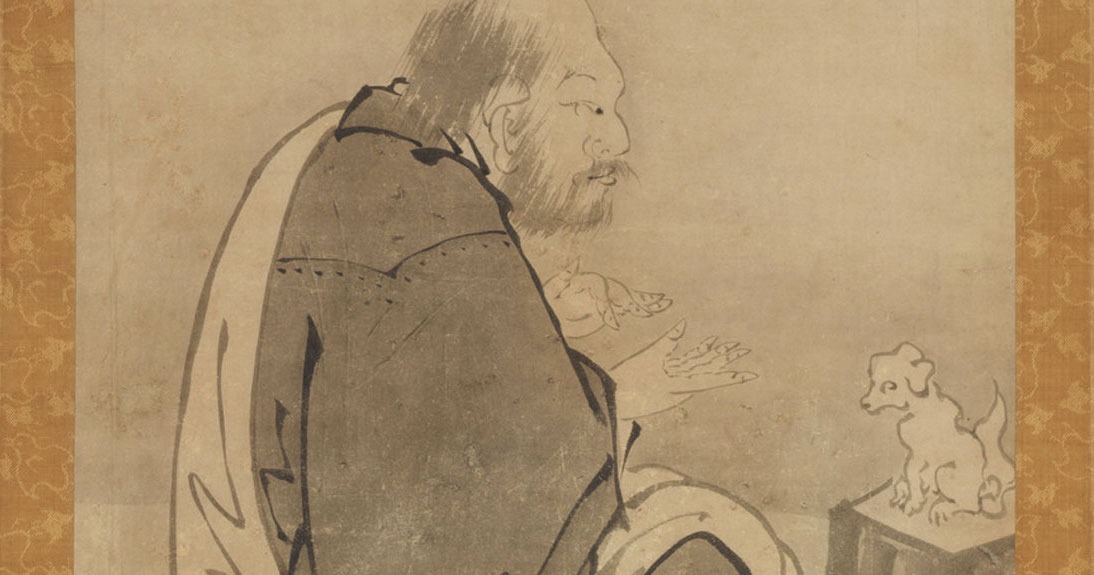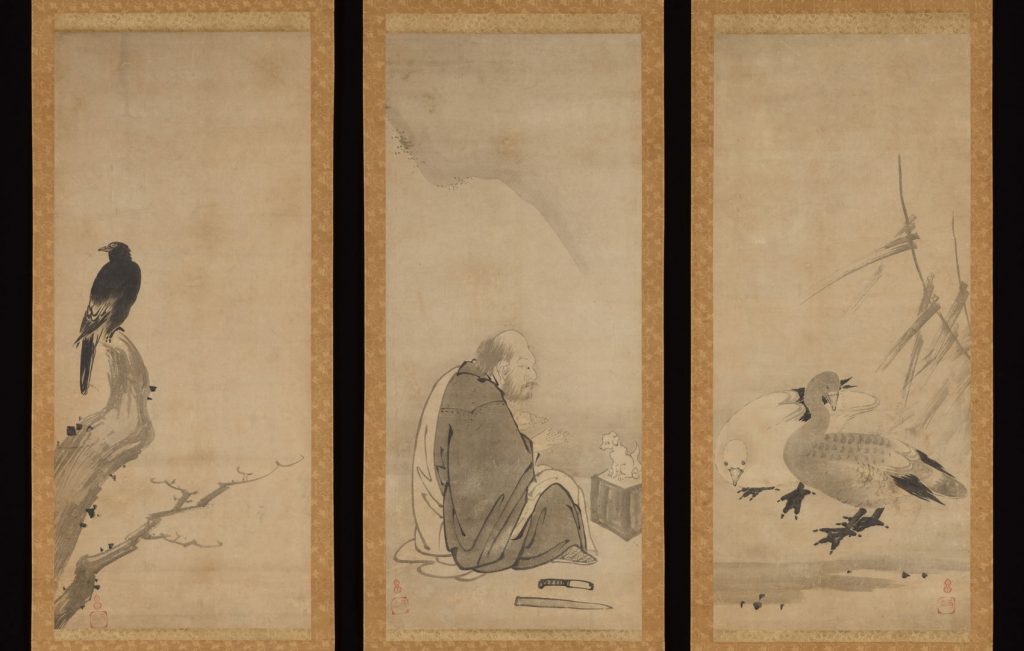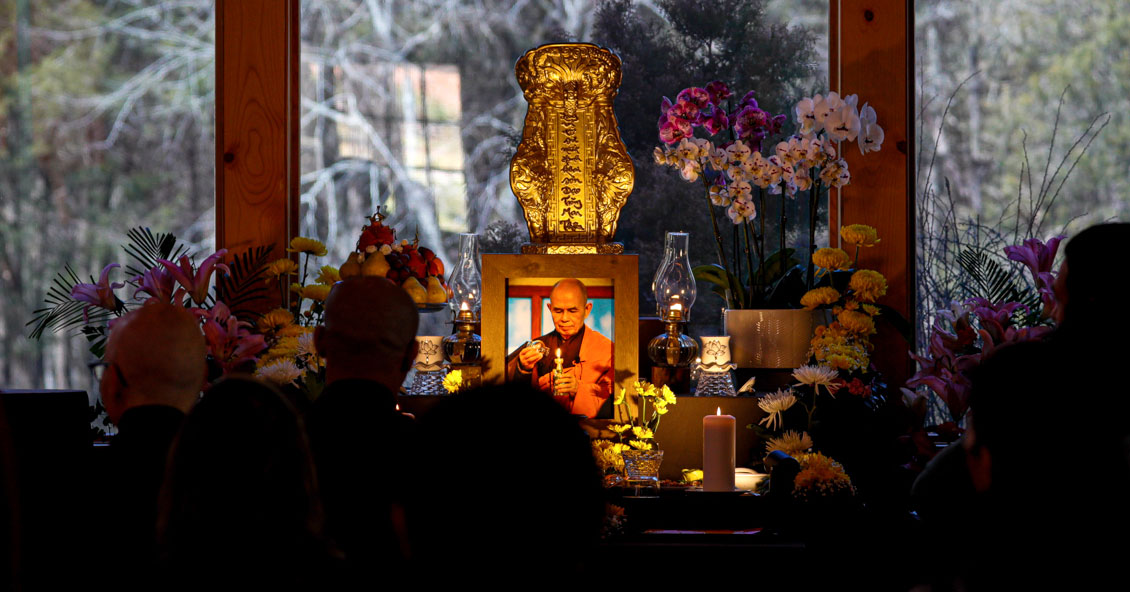Understanding Nonabiding as the Root of Compassion
A nondualistic look at the Chan concepts of huatou introspection and silent illumination and how, together, they plant the seeds of compassion The post Understanding Nonabiding as the Root of Compassion appeared first on Tricycle: The Buddhist Review.

A nondualistic look at the Chan concepts of huatou introspection and silent illumination and how, together, they plant the seeds of compassion
By Som Pourfarzaneh Sep 28, 2023 Huineng, the Sixth Patriarch of Zen, with Geese and Myna by Unkoku Toeki. Japan, 17th century. | Artwork courtesy the Metropolitan Museum of Art.
Huineng, the Sixth Patriarch of Zen, with Geese and Myna by Unkoku Toeki. Japan, 17th century. | Artwork courtesy the Metropolitan Museum of Art. Non-abiding is your fundamental nature…all worldly things are empty.
–The Platform Scripture of the Great Sixth Ancestral Master, excerpt translated by Guo Gu in Silent Illumination: A Chan Buddhist Path to Natural Awakening
In the line above, from The Platform Scripture, the Sixth Patriarch Huineng identifies nonabiding—to not dwell in or on any object, sensation, or experience—as the fundamental descriptor of the awakened mind. Along with no-thought—not getting caught up in any sort of mental formation, or attributing value judgments to thoughts, feelings, and emotions—and no-form—the true nature of all beings and phenomena being empty of inherent self and fluidly dependent on everything around them—nonabiding serves as a unifying central concept to the experience of awakening in Chan.
In Silent Illumination: A Chan Buddhist Path to Natural Awakening, Guo Gu makes the case for the paramount importance of nonabiding in achieving enlightenment and how the concept is realized through two traditional Chan practice methods of gong’an and mozhao (silent illumination). As the founding teacher of the Tallahassee Chan Center and a longtime student and former personal attendant of the late Master Sheng Yen, Guo Gu continues his teacher’s work by laying out the “Three Gates” of Chan as the gong’an’s huatou (critical phrase), silent illumination, and their more accessible entry point of meditation on the breath.
Gong’an and silent illumination could not appear to be more different. Known as a “public case,” or koan, a gong’an often describes a discourse between a teacher and student, including as its punch line a huatou, that exposes the limits of language to present an unsolvable, paradoxical riddle. Think about the sound of one hand clapping. Chan master Dahui Zonggao (1089–1163), a prominent figure of the Linji lineage, was a proponent of the use of huatou as an object of meditation. In one of the most famous huatous, a disciple asks the Chan master Zhaozhou Congshen (778–897) a seemingly innocuous question: “Does a dog have buddhanature?” Espousing the existing framework of Mahayana Buddhism, a Chan student would have been intimately familiar with the idea that all sentient beings, including humans, dogs, insects, and others, have within them the potential for awakening, the “embryo of buddha,” or “buddhanature.” Whether the disciple was challenging Zhaozhou or employing some other rhetorical device has been lost to history, but of utmost importance was the master’s one-word reply: “Wu!”—in Japanese, “Mu!”—which has been translated varyingly as “No!,” “Emptiness!,” or “Does not have!” The whole story is a gong’an; the punch line “What is No (Wu)?” is the huatou.
The apparent contradiction in this huatou is meant to stimulate a niggling sense of uncertainty in the Chan practitioner, like an itch that can’t quite be scratched or a name that is on the tip of one’s tongue. The huatou of the gong’an in the case of Zhaozhou’s dog becomes the object of meditation until the anxiety develops into a deep sensation of curiosity or wonder, known familiarly as the “Great Doubt.” Zonggao was a main proponent of the use of huatou to stoke the flames of this Great Doubt, which, given the right circumstances, could suddenly shatter one’s preconceptions and leave the practitioner seeing things as they truly are, signifying a moment of awakening. Any response that appears must be put down, until the mind is held in a state of nonabiding, continually questioning.
Silent illumination, or mozhao chan, on the other hand, which was employed by Chan Buddhist monk Hongzhi Zhengjue (1091–1157), takes a different approach. Unlike huatou and other forms of Buddhist meditation, silent illumination is considered a “methodless method,” without an object to serve as the mind’s focus. Instead, the practitioner is meant to direct their attention to the experience of meditation itself, beginning with zhiguan dazuo, or “just sitting.” Over time, the experience of sitting has the potential to shift into simply experiencing, which can also drop away into awakening.
The phrase “silent illumination” is actually a descriptor for the awakened mind’s natural state: quiescent and luminous. Free of all the usual vexations exhibited by the false sense of a static, Cartesian “self” at the core of one’s being, the practitioner’s wisdom deepens to imitate the true nature of all phenomena: empty of inherent existence and instead dependent on everything around them to function. (In a curious quirk of history, although silent illumination is most clearly associated with Hongzhi, it’s likely that the term was not actually popularized by the Caodong master at all but by his peer, Dahui, in sarcastic reference to others who claimed to be practicing Chan, but to the Linji master were perhaps not doing much of anything at all.)
Both the practice of silent illumination and the description of awakening that it represents incorporate nonabiding as a central tenet. In this “methodless method,” the mind is said to not abide anywhere, performing its luminous function without the need for dwelling on words or concepts. The experience of sitting itself is the focus of meditation, directing one’s attention to the moment-to-moment awareness without the false duality of subject and object. In fact, allowing the mind to stagnate while presuming to be correctly using the method is one of the known pitfalls of silent illumination practice, called the “ghost cave on the dark side of the mountain.”
Guo Gu brings together huatou practice and silent illumination by emphasizing their shared principle of nonabiding—nonabiding in paradox and nonabiding in form—while also introducing a new element: curiosity, or wonder. It is easy to see how curiosity shows up in huatou, yet Guo Gu also incorporates the underlying attitude of “wanting to know” into silent illumination where appropriate. It’s not a conceptual grasping by the seeking mind that is in search of an answer. Rather, it is a methodological openness that helps to safeguard the practitioner against dwelling on any one object during meditation, preventing stagnation, and aligning the mind in proximity with its true nature: luminous; pure; without a fixed, rigid center; and nonabiding. This openness as a form of wonder or curiosity may not itself be representative of awakening, but it’s a unique approach that can add a helpful layer to any meditation practice and shift one’s underlying feeling tone from one of stagnation to one of nonabiding.
This nonabiding is also the seed for compassion.
Because wonder can help prevent a practitioner from getting caught up in notions of or “abide in” a static self that in turn causes harm to others, a fruit or function of wonder is then compassion. If you’re angry about something that I have done, for example, I may be attuned to a compulsion to immediately go on the defensive and tell you a hundred and one things that you’ve done to me in the past that have led to your misplaced indignation. Conversely, if I’m curious about or open to your feelings and the reasons for which they’ve manifested in this moment, I’m more likely to listen to what you have to say and seek a peaceful reconciliation that benefits everyone involved. In other words, nonabiding and wonderment represent a concrete way to practice selflessness, where there’s no room for ego or the false dichotomy of “self” and “other,” and where compassion emerges effortlessly. With nonabiding, we are left in a state of wonder, nondwelling and free of form, luminous, compassionate, and closer to our true nature.
![]()
Thank you for subscribing to Tricycle! As a nonprofit, we depend on readers like you to keep Buddhist teachings and practices widely available.
This article is only for Subscribers!
Subscribe now to read this article and get immediate access to everything else.
Already a subscriber? Log in.

 Tekef
Tekef 




























.jpg&h=630&w=1200&q=100&v=f776164e2b&c=1)



